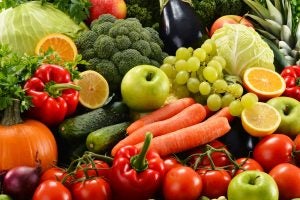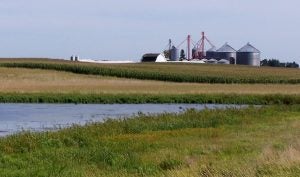The farm bill was created with three goals in mind, to keep food prices fair for farmers and consumers, ensure an adequate food supply, and protect and sustain the country’s vital natural resources. These goals have remained the same, even as the farm bill has greatly changing over time. And, while the common name of this legislation seems to only concern those in the agricultural community, we have come to learn that it heavily focuses on food security — hence why it’s more broadly called the “food and farm bill.”
Because this legislation is so expansive, many non-agriculture interest groups voice their opinions on what should be included. And environmental and conservation organizations — including some that are among the loudest activists against today’s agricultural and food security practices — are at the top of that list.
Despite already being five months into 2023, with only months left before the 2018 farm bill is set to expire, talks regarding policy priorities and expectations of what should be in the renegotiation of the legislation have really only just begun, and some environmental groups are releasing their priorities for the bill in hopes that their concerns will be addressed.
Having various interest groups and perspectives voice their needs for what should be in the farm bill is necessary in order to shape a bipartisan piece of legislation, but the agricultural community may be on edge about programs needed to protect their livelihoods, like crop insurance, possibly being on the chopping block.
The Food and Agriculture Climate Alliance released its priorities earlier in 2023, with a focus on reducing greenhouse gas emissions by food and farming industries. The alliance has a steering committee of over 80 industry organizations, including National Cattlemen’s Beef Association and American Farm Bureau Federation. The committee laid out an extensive list of conservation program suggestions for the upcoming farm bill.
Their list of 19 recommendations for conservation suggests that programs continue being voluntary but asks to strengthen financial contributions in order to expand things such as precision ag technology access, since adoption of modern farming tools can be costly and therefore prevent use. It also suggests strengthening focus on specialty crops through financial and technical support for an otherwise forgotten sector of farming.
Incentivizing cover crops and other climate smart practices are listed as well, requesting that the farm bill encourage the adoption of such practice with self-certified compliance allowing them to qualify for more funds through programs like the Farm Service Agency.

The Environmental Working Group (EWG) — the organization behind the often criticized Dirty Dozen list — is obviously focused on GHG reduction as well, but it hopes to also ensure other areas of the farm bill are supported.
Scott Faber, EWG’s Senior Vice President for Government Affairs, stated, “As Congress renews the Farm Bill, lawmakers must protect important conservation programs that can help address climate change and anti-hunger programs that help feed more than 40 million people — including millions of elderly people, disabled people and children. We should not shower more subsidies on the largest and most successful farmers at the expense of hungry people or the environment.”
Then, there is the National Wildlife Federation (NWF), whose sole purpose is to ensure wildlife and wildlife habitat protection, so naturally, they are hyper focused on the conservation title within the farm bill.
The Conservation Reserve Program (CRP) has long been a hot topic due to the nature of the program itself — put very simply, the CRP entails removing farm and grazing land from production as a means to rehabilitate and protect fragile land and paying participating producers who enroll. There are pros and cons to this, one being that otherwise healthy land that can help provide livelihoods for farmers and ranchers, as well as food, are taken out of production for years. A pro? Helping prevent overuse of land and balancing ecosystems.
The NWF recognizes that the CRP is an important part of the farm bill, and incentivizes participation through good funding.
“Farm Bill conservation programs provide technical and financial assistance to enable farmers, ranchers, and foresters to adopt practices that build soil health, improve water quality and quantity, sequester carbon, and enhance and protect habitat for wildlife,” the organization said. “However, due to high demand, these programs are often oversubscribed, with many more applicants than funding available. There is a need for increased support for conservation programs to ensure producers have the resources they need to adopt conservation practices on their lands. …
“The Inflation Reduction Act provided a historic investment of $20 billion for climate-smart agriculture and conservation programs. The 2023 Farm Bill should protect and build on this historic investment. Read more about the Inflation Reduction Act and what it means for agriculture conservation.”

And, while some groups are well-intentioned with their policies — keeping a realistic expectation of what farmers and ranchers really need to help provide quality food and reduce their impact on the planet — other organizations don’t agree so much.
The Sierra Club is infamous for bashing the agricultural industry’s impact on the Earth, and while some may think the group doesn’t concern themselves with policy such as the farm bill, the truth is that they are highly motivated to influence what is put into the legislation. According to them, the farm bill:
- Supports the biggest farms, most of which farm in ways that are most harmful to the environment.
- Subsidies go mostly to commodity crops, like soy and corn, which are used for animal feed, biofuels and in highly-processed foods.
- Cheap commodity crops make CAFOs and monocropping lucrative; both cause enormous harm to people and the environment.
According to their website, they have a list of priorities they are seeking for the upcoming farm bill:
- Conservation and Regeneration: Improve and increase funding for conservation programs, promote regenerative organic agriculture, and reduce water pollution
- Build Local, Eat Local: Lower barriers to SNAP benefits and boost funding for local food promotion and sourcing programs
- Food Not Feed: Redirect funding from industrial corn, soy, and CAFOs towards regenerative practices and nutrition/conservation programs
- Justice for All: Support small, BIPOC, and beginning farmers and ranchers through land access, debt relief, and other programs, and integrate the Justice 40 Initiative into the USDA’s programs
The National Resources Defense Council (NRDC) is a group highly focused on climate change as how the farm bill can impact the planet, and it has stayed true to their priorities that bolster climate friendly practices:
- Expanding support for organic agriculture, including assistance for farmers and ranchers to transition to organic.
- Incentivizing soil-boosting cover cropping through incentives in crop insurance.
- Reducing food waste across the food supply chain — with the ultimate goal of cutting U.S. food waste in half by 2030.
One thing is for certain, this list is only a handful of many environmental organizations that exist, and they are united in their priorities with the ability to garner a lot of support through their communication with their local governmental officials. While this isn’t inherently bad, it may also come at a price for conventional producers and traditional agricultural practices.
Markie Hageman Jones majored in agribusiness at Fort Hays State University. She is actively involved in her state Cattlemen’s Association, Young Farmers chapter, and National Cattlemen’s Beef Association. Her AGDAILY.com articles can be found here.



